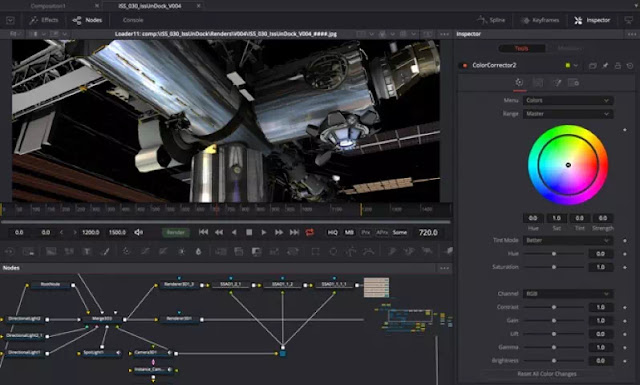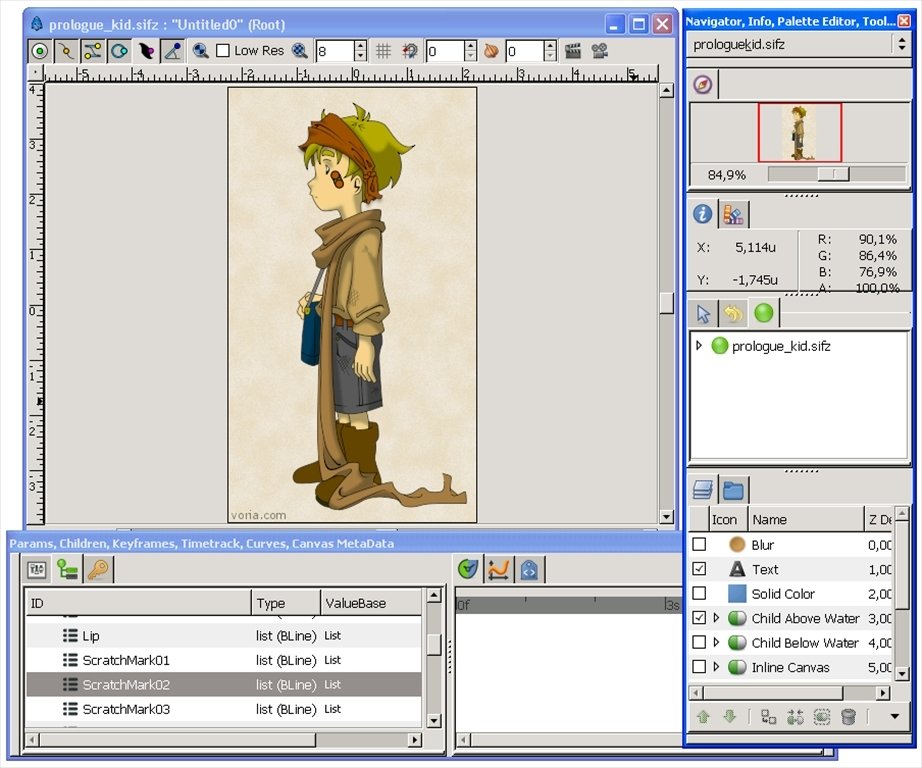Synfig Or Adobe Animate
- 1Summary
Summary
Vyond Studio animation software is designed for users of all skill levels. Like many apps similar to Adobe Character Animator, it produces all kinds of professional animation like whiteboard videos, explainer videos, etc. Enhanced with helpful features, this animation tool creates great data visualizations to engage your audience. Synfig was designed to look like and work similar to Adobe Flash (now called Adobe Animate), so if you've used Flash in the past, you will quickly learn the Synfig workspace. It includes a number of advanced animation tools, including vector tweening, layers and filters, and bones.
Each Canvas is either in Animate Editing Mode or it isn't.
When Animate Editing Mode is ON

When on Animate Editing Mode, each time you edit a parameter (whether directly in the Parameters Panel or indirectly by moving a Handle), a Waypoint is created to remember the change, and the position on the Time Track Panel at which the change happened : you are creating an animation.
Depending on the value of the Editing Lock Keyframes setting, waypoints may also be created in the next and previous Keyframe as well.
When Animate Editing Mode is OFF
When not in Animate Editing Mode, changes to a parameter will be applied throughout the entire timeline of the animation.
If there are already waypoints on the timetrack (Animated ValueNodes) for the parameter in question, this causes a warning and your edit will be not allowed. A warning message asking you : 'Do you want to apply offset to this animation?' will offers the opportunity to apply an offset for this parameter for the entire timeline of the animation.
Toggle Animate Editing Mode
Animate Editing Mode can be toggled on and off by clicking the round button to the right of the timetrack at the bottom of the canvas window. It will only be visible if your canvas has a non-zero end time, and will only be active if you're not currently using a tool which disables the timetrack, such as the Spline Tool or the Draw Tool.
| Name | Icon | Behavior |
| Animate Editing Mode Off | Changes will be applied throughout the entire timeline of the animation. | |
| Animate Editing Mode On | Changes will create a Waypoint to remember the value. |
Synfig Adobe Animated

When toggling the Animate Editing Mode ON, the Canvas Window will be highlighted with red border line.
| Language: | English • français • 中文(中国大陆) |
| Original author(s) | Macromedia |
|---|---|
| Developer(s) | Adobe Inc. |
| Final release | 12 / February 11, 2013; 8 years ago |
| Operating system | Windows and OS X |
| Type | Computer animation |
| License | Trialware |
| Website | www.adobe.com/products/director.html |
Adobe Director (formerly Macromedia Director) was a multimedia application authoring platform created by Macromedia and managed by Adobe Systems until its discontinuation.
Director was the primary editor on the Adobe Shockwave platform, which dominated the interactive multimedia product space during the 1990s.[1] Various graphic adventure games were developed with Director during the 1990s, including The Journeyman Project, Total Distortion, Eastern Mind: The Lost Souls of Tong Nou, Mia's Language Adventure, Mia's Science Adventure, and the Didi & Ditto series. Hundreds of free online video games were developed using Lingo, and published on websites such as Miniclip and Shockwave.com.
Director published DCR files that were played using the Adobe Shockwave Player, in addition to compiling native executables for Microsoft Windows and Mac OS X. Director allowed users to build applications on a movie metaphor, with the user as the 'director' of the movie. Originally designed for creating animation sequences, the addition of a scripting language called Lingo made it a popular choice for creating CD-ROMs, standalone kiosks and internet video games content during the 1990s.
On January 27, 2017, Adobe announced that it was discontinuing Director. Sales of Director ceased on February 1, 2017; ongoing updates and support for the software ended on March 14, 2017.[2][3][4]
Features[edit]
Director applications are authored on a timeline, similar to Adobe Flash. Director supports graphical primitives and playback controls such as video players, 3D content players, and Flash players. Director includes a scripting language called Lingo, and plug-in applications called Xtras, which are similar in functionality and design to ActiveX. Director supports a graphical user interface framework with basic controls and allows interaction with external files and certain Windows APIs. Director has been used to create applications, 2D and 3D video games, self-running kiosks, and CDs and DVD launchers. Director supports many different images, audio, and video formats.
Lingo[edit]
Director includes a scripting language called Lingo, and a suite of 2D image manipulation tools referred to as 'imaging Lingo'. This subset of Lingo allows authors to perform advanced operations such as to bitblit. While a vast majority of users rely on the score timeline for the development of their work, a number of expert developers create stunning projects, such as games, that take advantage of the speed of imaging Lingo. These advanced projects typically use only 1 frame on the score timeline using Lingo to control animation and interaction. Director 8.5 added the ability to import, manipulate, and display 3D objects. The 3D features were quite advanced for the time, unusual for an authoring environment. The 3D capability includes the ability to create geometry on the fly from code, hardware accelerated model display, and advanced lighting features. It also supports vector graphics and 3D interactivity through a Shockwave 3D file object. Since Version 6, Director has supported the import of Flash animation files and Lingo can be used to interact with Flash's Actionscript code for more control.
Xtras[edit]
One of the most powerful aspects of Director is its extensibility, which is achieved through plug-in applications named Xtras. For example, there are Xtras for OS desktop manipulations (creating folders, files, icons, shortcuts, registry editing) and Shell control, dedicated text processing (RegX), PDF readers, and many more. With Xtras, Director can be extended to support additional media types beyond those that the stock version of the software allows. These can be created by users or purchased from third party vendors. They are created using Adobe Director's XDK (Xtra Development Kit), a C++ SDK. With the change in new versions of Director, Xtra developers need to modify their products to maintain ongoing support. With changing industry trends, many third-party Xtra developers have discontinued products and dropped support due to the cost of development without a significant return.
Publishing[edit]
For online distribution, the Director can publish projects for embedding in websites using the Shockwave plugin. Shockwave files have a .dcr file extension. Other publishing options include a stand-alone executable file called projectors, supported on Macintosh and Windows operating systems, and with Director 12, output for iOS. Early versions also supported execution of the 3DO console. The Director score timeline can also be exported as a non-interactive video format, such as a QuickTime or sequence of images.
Comparison with Flash[edit]

The differences between Director and Flash have been the subject of much discussion, especially in the Director development community. Extensibility is one of the main differences between the two, as are some of the sundry codecs that can be imported. Director has tended to be the larger of the two, but that footprint has been part of its weakness. This weakness manifested into the erosion of Director's ubiquity as the leader of authoring tools, especially in the critical window of 1998 - 2000. The download footprint of the Director Shockwave plugin was significantly larger than the Shockwave Flash download footprint. Additionally, Macromedia partnered with distributors such as Dell, Apple, etc. to have the Flash plugin pre-installed on machines for users, so that they would not be prompted to install any additional software. At that point in time (1998–2000), broadband internet access was not the norm for most users, and the fivefold difference in size was significant.
History[edit]
Director started out as MacroMind 'VideoWorks', an application for the original Macintosh. Animations were initially limited to the black and white of early Macintosh screens.
Synfig Tutorial
The name was changed to 'Director' in 1987, with the addition of new capabilities and the Lingo scripting language in 1988. A Windows version was available in the early 1990s.
Synfig Adobe Animate Pro
From 1995 to 1997 a competing multimedia authoring program appeared called mTropolis (from mFactory). In 1997 mTropolis was purchased and buried by Quark, Inc., who had its own plans into multimedia authoring with Quark Immedia.

Adobe Animate Cc Free Download
Product Timeline[edit]
- 1985: VideoWorks
- 1987: Named Director 1.0
- 1993: Macromind Director became Macromedia Director (v 3.1.3)
- 1994: Macromedia Director 4 was released (Windows and Mac PowerPC support)
- 1995: Macromedia Shockwave Director 4.0.1 was released in January for Windows (Mac support in later release)
- 1996: Macromedia Director 5 was released (MOA and Xtras)
- 1997: Macromedia Director 6 was released (Shockwave integration, behavior & mp3 support)
- 1998: Macromedia Director 6.5 was released (QuickTime 3 support & Xtra integration)
- November 16, 1998: Macromedia Director 7 was released (engine rewrite)
- 2000: Macromedia Director 8 was released
- 2001: Macromedia Director 8.5 was released (Shockwave3D)
- 2002: Macromedia Director MX was released (also known as Director 9)
- January 5, 2004: Macromedia Director MX 2004 was released (also known as Director 10)
- March 25, 2008: Adobe Director 11 was released
- March 23, 2009: Adobe Director 11.5 was released
- September 6, 2010: Adobe Director 11.5.8 was released
- August 18, 2011: Adobe Director 11.5.9 was released
- February 11, 2013: Adobe Director 12 was released
- January 27, 2017: Adobe Director end-of-life announcement
- February 1, 2017: Adobe Director removed from market
- March 14, 2017: Ongoing updates and support for Adobe Shockwave on Mac devices ends
Adobe Director[edit]
The first Director release under the Adobe brand (v. 11), released after a gap of four years, featured DirectX 9 and Unicode support and extended 3D capabilities based on the NVIDIAPhysX engine, as well as bitmap filters, enhanced video, audio and image file formats support, and Adobe Flash CS3 integration. Shockwave Player 11 was also released.
Version 11.5 added 5.1 channel surround sound audio capabilities, real-time mixing, audio effects and DSP filters. Also, there is added support for H.264-video integration for full-screen and high-definition playback. Other supported formats include: 3D importer for Google SketchUp, streaming support using RTMP and ByteArray datatypes.
Synfig Animation Tutorial
References[edit]
- ^Kelly Hart; Mitch Geller (2008). New Perspectives on Dreamweaver CS3, Comprehensive. Cengage Learning. p. 429. ISBN978-1-4239-2531-6.
- ^'The Future of Adobe Contribute, Director and Shockwave - Adobe Blog'. adobe.com. 27 January 2017. Retrieved 16 April 2018.
- ^'Adobe will stop selling Contribute and Director on February 1, drop Shockwave for Mac support on March 14'. venturebeat.com. 27 January 2017. Retrieved 16 April 2018.
- ^'End of Life (EOL) for Adobe Shockwave'. helpx.adobe.com. Retrieved 2019-03-05.
External links[edit]
- Official website
Motion graphics and animation software | ||||
|---|---|---|---|---|
| 2D | 3D | Mix | ||
| Free and open-source | ||||
| Closed-source | Freeware |
| ||
| Commercial | ||||
| Discontinued / Legacy | ||||
